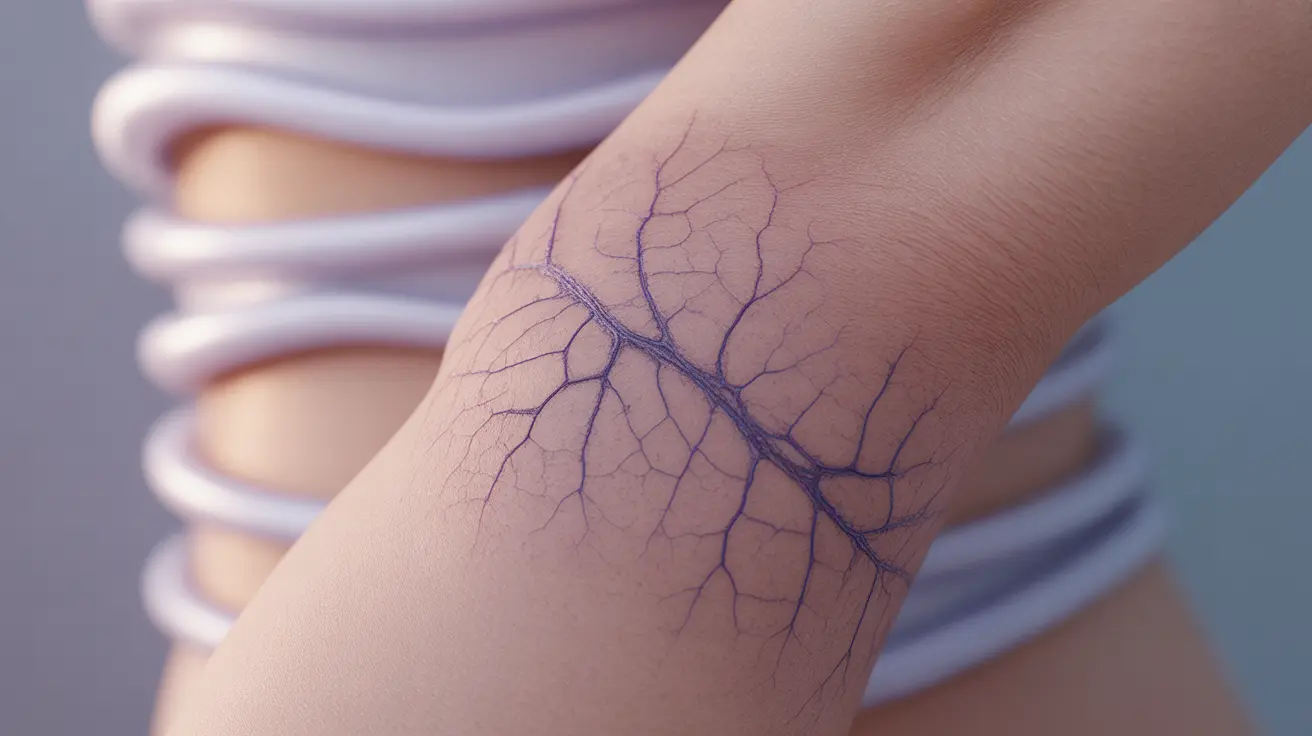Purple stretch marks, also known as striae rubra, represent the initial stage of stretch mark formation when the skin experiences rapid stretching. These distinctive purple or reddish marks occur when the dermis—the middle layer of skin—tears due to excessive stretching, causing small blood vessels to become visible through the skin's surface.
While purple stretch marks can be concerning for many people, understanding their causes, available treatments, and prevention strategies can help you better manage and potentially reduce their appearance. This comprehensive guide will explore everything you need to know about purple stretch marks and how to address them effectively.
What Causes Purple Stretch Marks?
Purple stretch marks develop when the skin undergoes rapid changes that exceed its natural elasticity. Several factors can contribute to their formation:
- Hormonal changes during pregnancy
- Rapid weight gain or loss
- Growth spurts during puberty
- Certain medical conditions
- Prolonged corticosteroid use
- Muscle building and rapid physical development
The purple coloration occurs because the tears in the dermis reveal underlying blood vessels. As the marks heal, they typically fade to a lighter, silvery color, though this process can take months or even years.
Common Areas Affected by Purple Stretch Marks
While stretch marks can appear anywhere on the body, they most commonly develop in areas where significant skin stretching occurs:
- Abdomen and lower belly
- Breasts
- Thighs and hips
- Upper arms
- Lower back
- Buttocks
Treatment Options for Purple Stretch Marks
Topical Treatments
Several over-the-counter and prescription treatments may help improve the appearance of purple stretch marks:
- Retinoid creams
- Hyaluronic acid
- Vitamin E oil
- Cocoa butter
- Bio-oil
- Specialized stretch mark creams
Professional Treatments
For more significant improvement, various professional treatments are available:
- Laser therapy
- Microdermabrasion
- Chemical peels
- Microneedling
- Radio frequency treatment
- Light therapy
Prevention Strategies
While not all stretch marks can be prevented, several strategies may help reduce their likelihood:
- Maintain steady weight during periods of change
- Stay hydrated
- Eat a balanced diet rich in vitamins C, D, E, and zinc
- Use moisturizing creams regularly
- Exercise to maintain skin elasticity
- Massage prone areas with nourishing oils
Risk Factors
Certain factors may increase your likelihood of developing purple stretch marks:
- Family history
- Pregnancy
- Rapid weight fluctuations
- Adolescent growth spurts
- Bodybuilding
- Cushing's syndrome
- Genetic conditions affecting skin elasticity
Frequently Asked Questions
What causes purple stretch marks and how do they develop on the skin?
Purple stretch marks develop when the skin stretches rapidly, causing tears in the dermis layer. The purple color comes from visible blood vessels beneath the torn skin tissue, typically occurring during pregnancy, rapid weight changes, or growth spurts.
How can I treat purple stretch marks and what treatment options are most effective?
The most effective treatments include a combination of topical treatments (retinoids, vitamin E) and professional procedures like laser therapy or microneedling. Early intervention typically yields better results, as purple stretch marks are more responsive to treatment than older, silver ones.
Will purple stretch marks fade over time or can they completely disappear?
Purple stretch marks naturally fade to a silvery-white color over time, typically within 6-12 months. While they may not completely disappear without treatment, their appearance usually becomes less noticeable as they mature.
What are the common risk factors that increase the chance of getting purple stretch marks?
Common risk factors include pregnancy, rapid weight changes, genetic predisposition, hormonal changes, adolescent growth spurts, and certain medical conditions or medications that affect skin elasticity.
How can I prevent purple stretch marks during pregnancy or rapid weight changes?
Prevention strategies include maintaining healthy weight gain, staying hydrated, eating a nutrient-rich diet, regularly moisturizing prone areas, and using specialized stretch mark prevention creams. However, some stretch marks may still develop due to genetic factors and hormonal changes.




